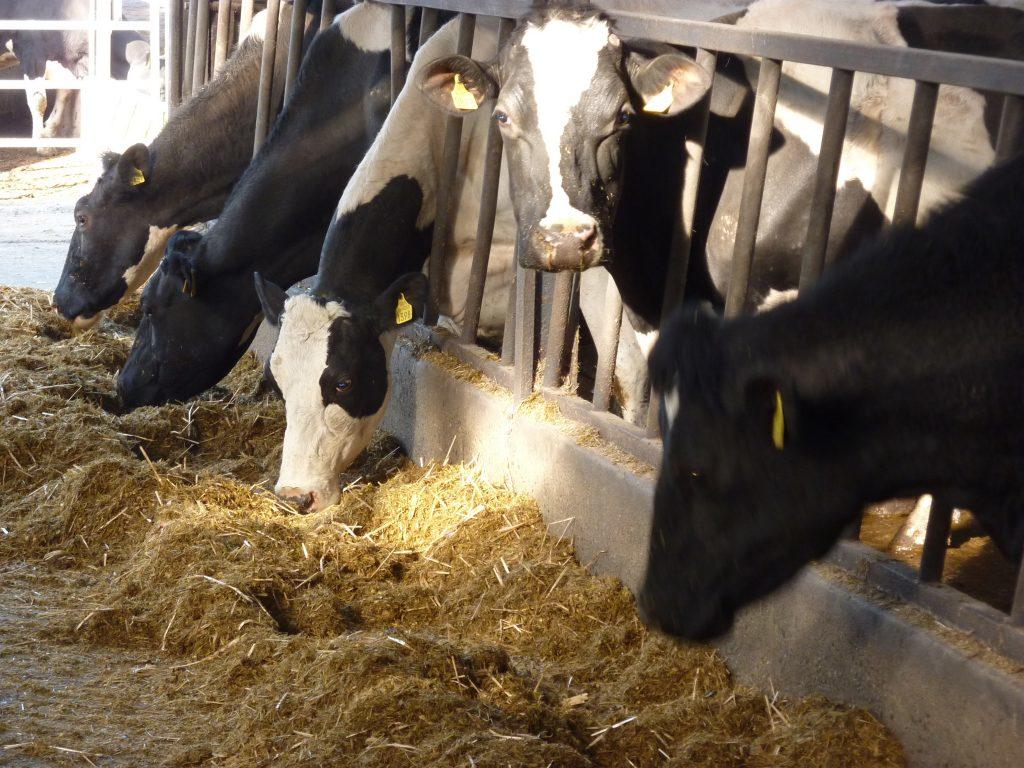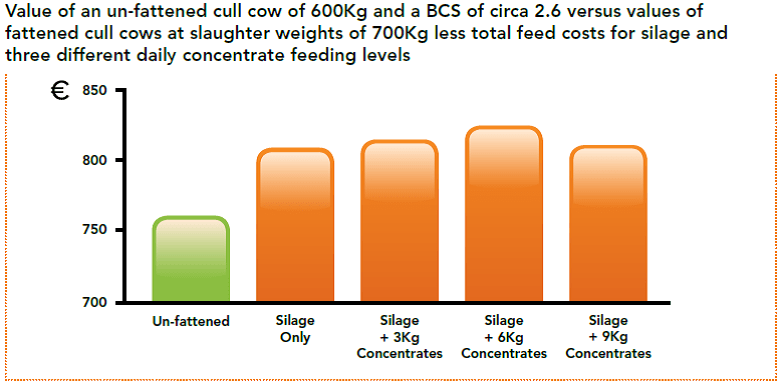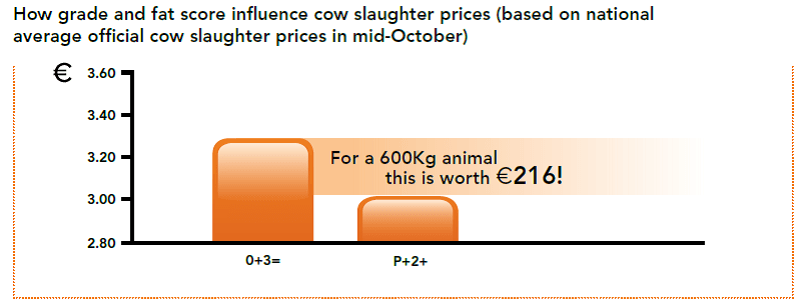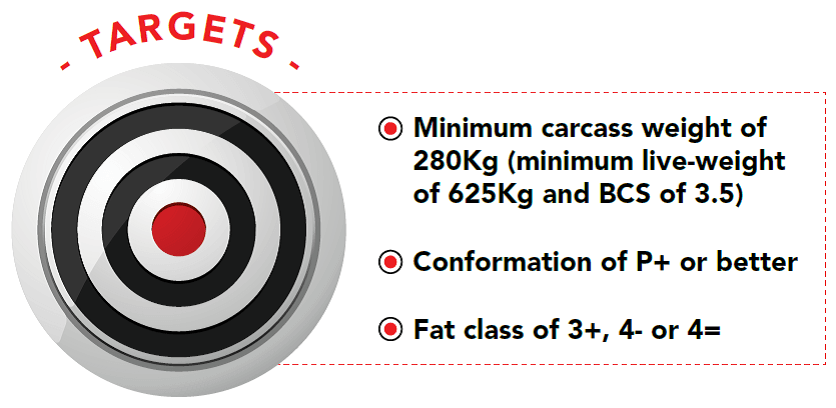Get a 24 hour weather forecast

The economics of feeding cull cows depends on the quality of the silage available, the cost of silage and concentrates, the condition of the animals and the likely slaughter price. It is more likely to make sense to feed and fatten these animals if they are below the target fat score (Body Condition Score of 3.5 or more) and you have quality feed available at relatively low prices. It is more difficult to predict beef prices!
The bar chart below gives an example (based on research carried out by Teagasc Moorepark) of the value of an un-fattened cull cow versus a cull cow fed grass silage and various levels of concentrates less total feed costs.

• The silage is excellent quality of 74 DMD and the concentrate is also high energy (0.96 UFL as fed)
• The cost of the silage and concentrate are €30 and €280 per tonne respectively
• It takes 141 days (0.71Kg average daily gain) for the silage only diet and 107 (0.94), 84 (1.19) and 82 (1.23) days for the respective silage plus concentrate diets to achieve the target slaughter weight
• The kill-out % for the un-fattened cull cow is 42%; 46% for the silage only diet and 46.5%, 47% and 47.5% for the respective silage plus concentrate diets
• The slaughter price for the un-fattened cull cow is €3/Kg carcass (P+2+) and €3.36 (O+3=) for the fattened cull cows
• Performance levels are based on healthy cows with no lameness or mastitis problems; cows with these issues are unlikely to achieve these performance levels
The silage plus 6Kg stands out as delivering the best margin, nearly €100 per head over feed costs. It is worth noting however that the performances above are based on excellent silage quality (74 DMD) and an extra 1Kg of meal per head per day is likely to be required for every 4-5 point drop in silage DMD. Therefore ‘average’ 68 DMD silage would deliver circa €30 per head less margin and make the silage only or silage plus low levels of meal options unfeasible as the average daily gain would be too low. The bottom line is that cull cows should not be fed if you are short of silage or the quality of the silage is poor (this again highlights the importance of sampling and analysing your silage).
Key point: Feeding and fattening cull cows appears to make sense but is highly dependent on having good silage (DMD70+) available.


Key point: Know your targets and ensure you achieve them; the difference in price can be huge, over €0.50 per Kg deadweight in some cases.
Cull cows should be fed a high energy (minimum 0.94 UFL/Kg as fed) concentrate with a protein content of 12-14%, with vitamins & minerals. Prime Elite Maize Munch is ideal as it is high energy, 14% protein, plus it contains yeast acts as a buffer against digestive upsets.